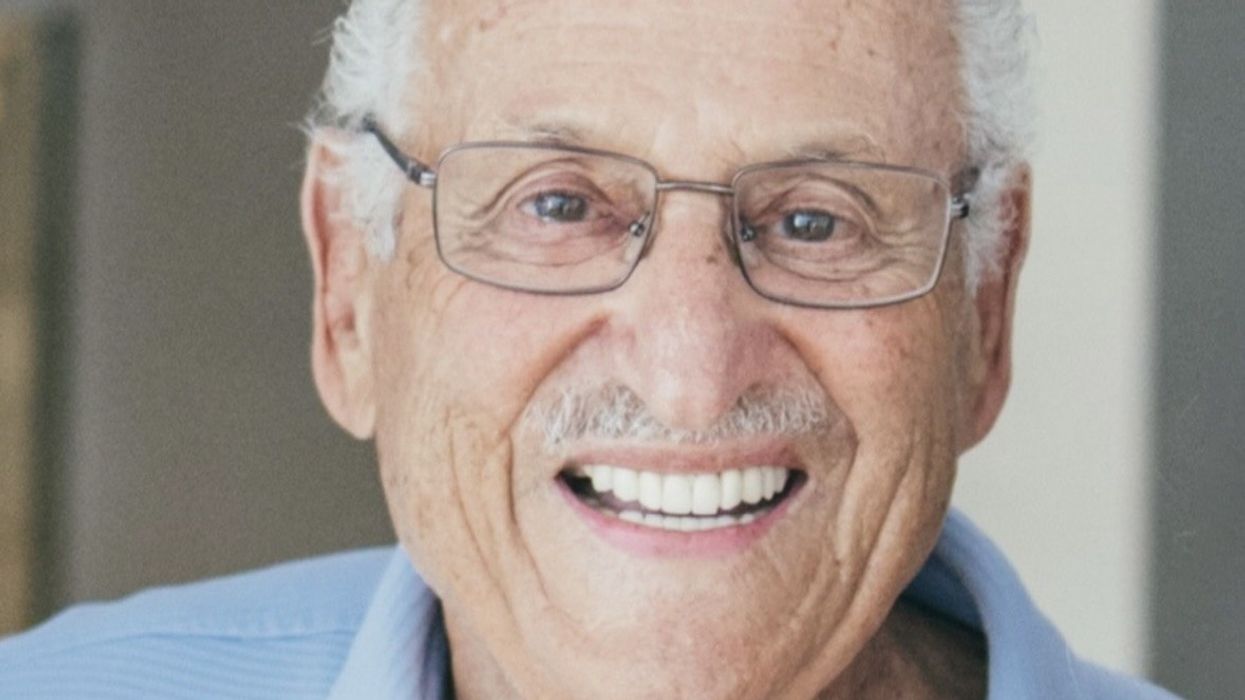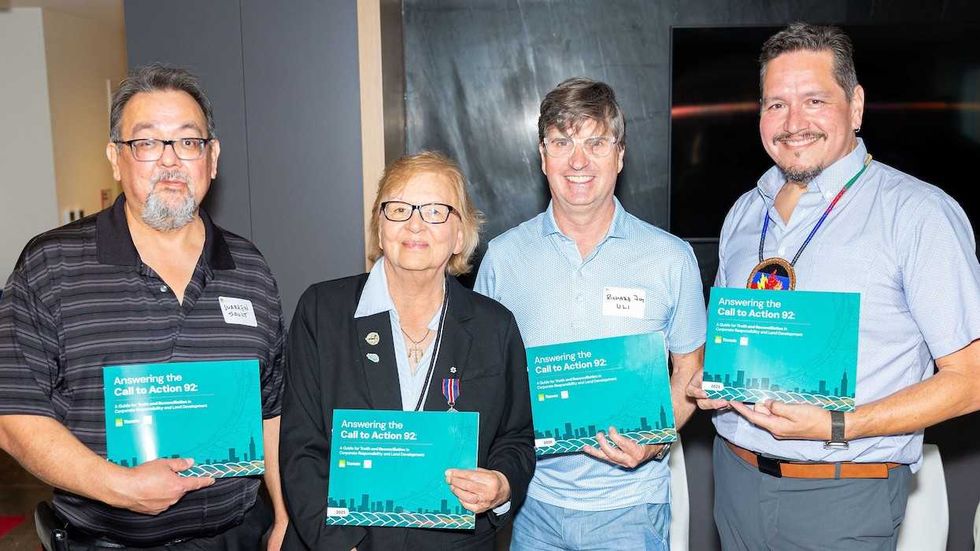City-building doesn’t happen without demolition. The Teperman name has been synonymous with demolition — and subsequent city-shaping — for over a century, with Teperman Wrecking’s signature orange and black trademark a familiar sight on construction hoarding in major Canadian cities. Marvin Teperman, grandson of Teperman Wrecking’s founder Samual, was front and centre to the company’s large-scale growth. Alongside his cousin Morton, he took over a labour intensive operation and turned it into a multi-faceted machine intensive institution across Canada and into the United States (US). The change-maker — one his grandson, Toronto developer Jordan Teperman, calls an icon and his hero — passed away peacefully on Friday, June 6, at the age of 93.
Many will remember Marvin for his storied and influential professional career. Teperman Wrecking, established in 1918, was instrumental in famed city-shaping projects, like New York City’s Battery Park; Toronto’s Eaton Centre (Cadillac Fairview), First Canadian Place (O&Y), Scotia Plaza (Campeau), BCE Centre (Trizec), and Commerce Court (CIBC); Montreal’s Expo 67, Laurentian Hotel, and clearing the way for the Declaire Expressway.
Teperman was even responsible for the removal of an entire town in Morrisburg, Ontario for the St. Lawrence Seaway Corporation. Toronto’s Eaton Centre involved the demolition and redevelopment of an entire downtown city block, comprising over a dozen major buildings over the course of two years. A project of this size had never been undertaken in Toronto prior to Teperman taking on the job, and no other project of this size has been completed since.
“Every corner on every block would have the Teperman name on it; if you look at all of the vintage Toronto pictures, the Teperman sign is in almost all of them,” says Jordan of Teperman Wrecking’s long-time influence in Canada. “It grew through Toronto, Montreal, Calgary, Winnipeg, and into the United States in places like New York City. They were pioneers in the business, but it wasn’t even a business — it was more of an institution.”
As a kid, Jordan recalls watching some of the dramatic demolitions, which often made local headlines and the nightly news. Through the brand and institution he created, Marvin became intertwined with political jokes in newspaper comics, and the subject of a famous song played on the radio, “Mr. Teperman.” Articles published in newspapers across Canada profiled the Tepermans and the unique art of demolishing.
Jordan says his grandfather was proud to shape Toronto, but some projects left a notable impact, including the demolition of Rosedale’s Chorley Park mansion, the former Government House. “The City took it over and it fell into disarray, and he tore it down in 1959,” says Jordan. “He would say that demolishing Chorley Park was like dropping a fine piece of china from the fifth storey of a building and watching it smash. He didn’t understand why they wrecked it and was really bothered by it.”
Marvin was politically connected with mayors, premiers, and prime ministers. Jordan recalls Marvin’s close relationship with local politicians. “The building department’s joke was that they would take the drawings from new buildings being built and send them to Teperman to see if they could take them apart or if they’d fall down,” says Jordan.
Marvin lived his life through three main principles, according to Jordan: Fairness, integrity, and honesty. This rang true in both life and business. “His quote was, ‘Don’t lie, don’t cheat, don’t bullshit, work hard, and smile,’” says Jordan. “He was an icon. You can not replace this guy and the respect he had across this country.”
Marvin leaves a lasting legacy — one Jordan hopes to carry on by continuing to build Toronto as a high-rise developer. “He was a major driver of cities evolving and cities don’t renew without development,” says Jordan. “They took them down, and now I build them up.” As for Teperman Wrecking, the company is currently run by Jordan’s uncle, Sean, and has evolved beyond demolition to feature waste management, scrap metal, and general contracting.
The strong brand created by Marvin and his family continues to thrive. “His identity wasn’t just woven into the brand and the identity he created,” says Jordan of his grandfather. “The company was able to expand because of the type of person he was. Anyone can have a name or a brand. You can buy a brand name product and not like it. But he was a product that was continually liked, because his word was his word, a deal was a deal, and he got the job done."





















